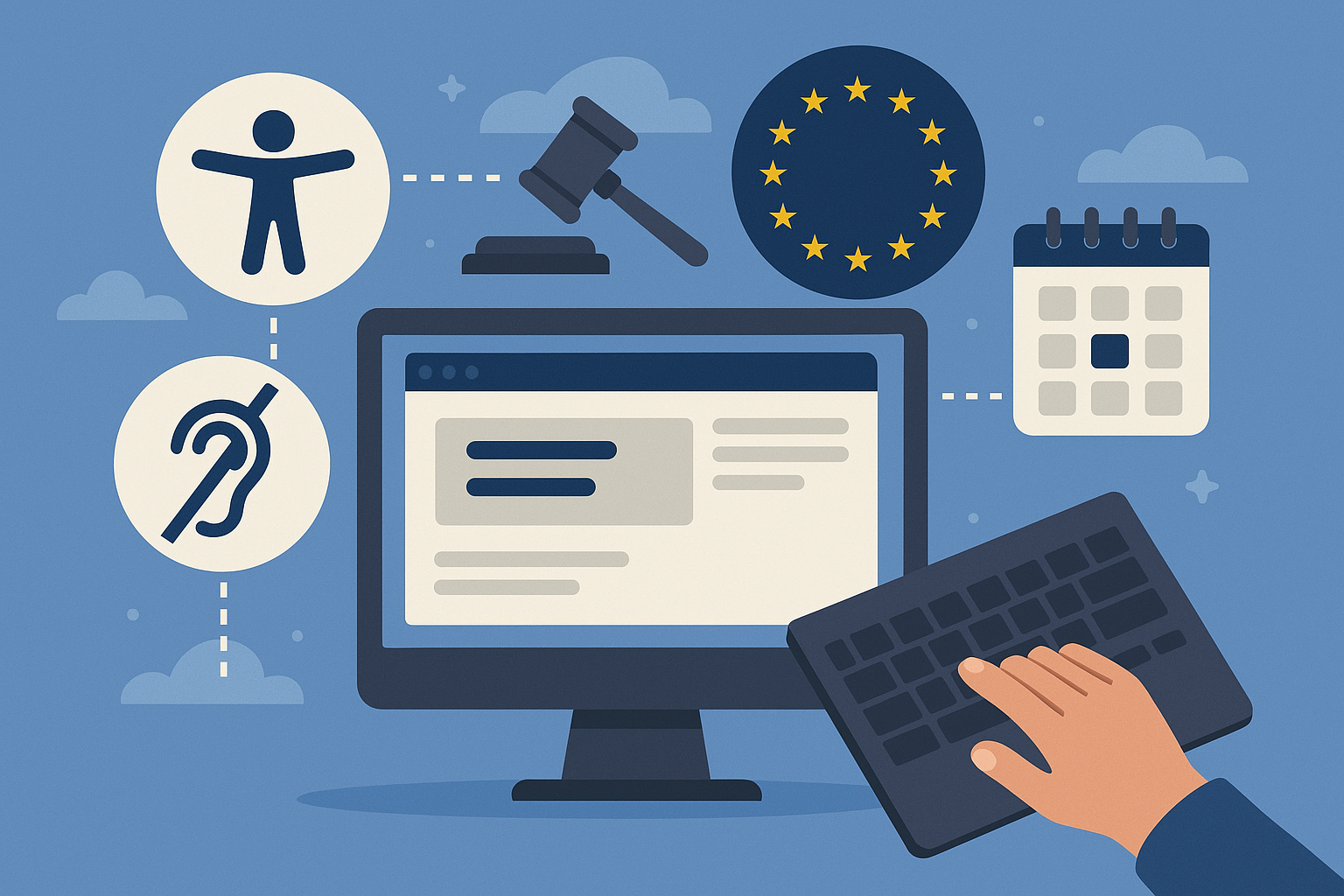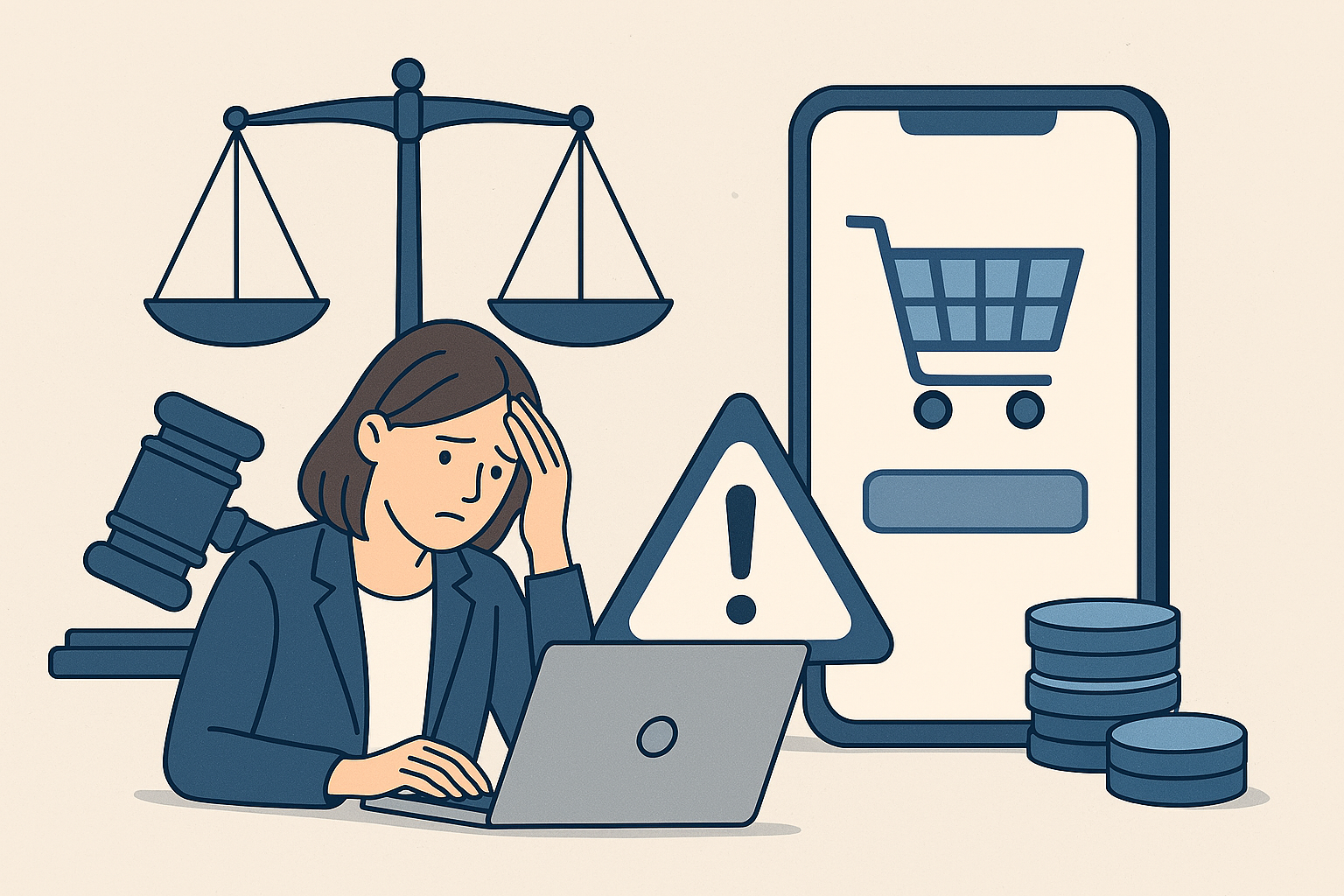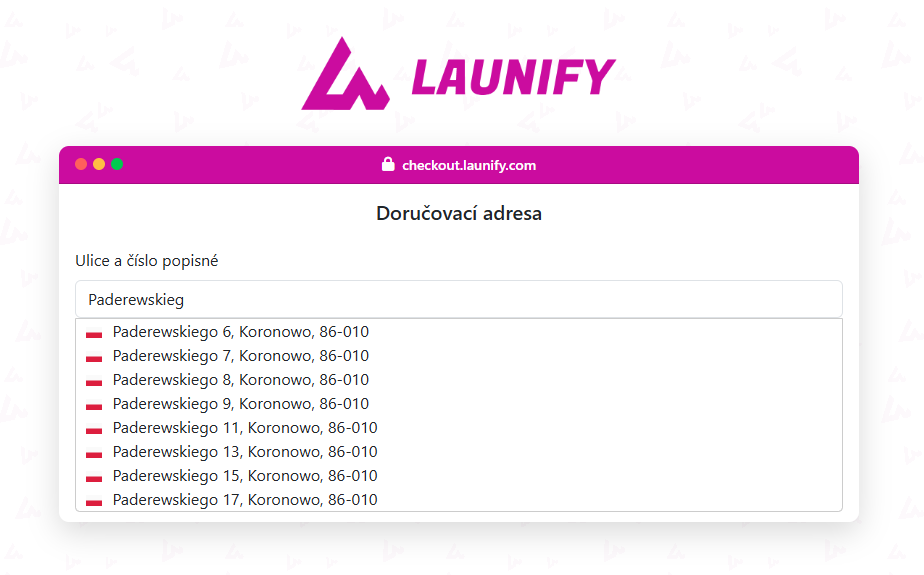Article
New Accessibility Law: What Does It Mean for E-Shops and Digital Services?
As of June 28, 2025, a new law on the accessibility of certain products and services will come into effect. With this, the Czech Republic is fulfilling the requirements of the European Accessibility Act (EAA) and joining the rest of the EU in the effort to make the digital world accessible to everyone — including people with disabilities, seniors, and individuals with temporary limitations.

Published on: 19.6.2025 • Written by: Team Launify Reading Time: 15 min
If you run an e-shop or any other digital service for consumers, now is the right time to check whether your platform complies with the Accessibility Act.
Why accessibility?
Digital accessibility means that websites, apps, devices, and services are designed to be usable by everyone – regardless of health status, age, or technology used. This includes things like being able to operate an e-shop using only a keyboard, readable color contrasts, alternative image descriptions, correct heading structure, or screen reader compatibility.
The goal is to prevent situations where, for example, a visually impaired person cannot order goods or tickets simply because the e-shop interface is unclear or unusable.
Who does the law apply to?
The law applies to most digital services intended for consumers, regardless of whether they are paid or not. It mainly concerns:
- E-shops and online marketplaces
- Providers of digital content
- Online banking and payment services
- Reservation systems
- Online ticket and fare sales
- E-book readers, multimedia, television broadcasting, and other products
An exception is made for so-called micro-enterprises – companies with fewer than 10 employees and an annual turnover of less than 2 million euros. Both conditions must be met simultaneously.
What does this mean for e-shop operators?
Accessibility is not just about technology or design. It also involves content, language, and user logic. E-shop operators must ensure that:
- Texts on the website are clear and logically structured (e.g., proper heading hierarchy)
- Images have alternative descriptions (alt texts)
- Forms are accessible via screen readers and keyboard
- Color contrasts allow readability for visually impaired users
- Videos include subtitles or transcripts
The law also requires updating your terms and conditions, which should include:
- A clear description of the provided service (e.g., how the purchase process works)
- An overview of how your digital service meets accessibility requirements
Who will enforce accessibility?
For examplen the Czech Republic, the Czech Trade Inspection Authority will oversee compliance. They can impose penalties if digital services do not meet the minimum accessibility standards.
Why accessibility is more than just legal compliance
Accessibility shouldn’t be seen as a “necessary evil” or regulation to work around. On the contrary – it's an opportunity. An accessible e-shop:
- Reaches a wider audience (e.g., seniors, people with temporary injuries, mobile users)
- Improves SEO thanks to better structure and semantics
- Increases conversions due to easier navigation
- Minimizes legal risks
In the end, accessibility is a competitive advantage that can lead to higher sales and a better reputation.
How to get started?
- Find out if the law applies to you
- Conduct an accessibility audit of your website – both technical and content-related
- Start making adjustments: focus on HTML structure, alt texts, navigation, contrast, and content logic
- Review your template if using a CMS or third-party platform
- Update your terms and conditions in line with the law
- Follow updates related to the international WCAG 2.1 standard – the foundation of the new requirements
🌍 Overview of the situation in Europe (as of 2025):
✅ Countries that have already implemented the EAA and have active legislation:
- Germany – The “Barrierefreiheitsstärkungsgesetz” is in effect, detailing technical standards and sanctions
- Sweden – Implemented via the “Lagen om tillgänglighet till produkter och tjänster”
- France – Has active legislation and public monitoring via accessibilite.gouv.fr
- Netherlands – Strong real-world implementation; strict public sector oversight for years
- Finland, Denmark, Belgium, Austria – Adopted laws; public institutions often support businesses with guidelines and tools
- Italy – Implemented as an extension of the existing “Legge Stanca” law from 2004
🔄 Countries with delayed or partial implementation:
- Czech Republic – Law adopted in late 2023, effective from June 28, 2025
- Slovakia – Law transposed, but often lacks clear guidelines for businesses
- Hungary, Romania, Bulgaria – Legislative framework exists, but enforcement and business support are still developing
❗ Note:
No country requires full EAA compliance before 2025, but some – like Germany or the Netherlands – already have active inspections and guidelines in place due to the parallel development of digital government services and accessibility.
What does this mean for international e-shops?
If your e-shop targets foreign EU markets, you need to comply with these accessibility rules not just in the Czech Republic. An e-shop in German, Dutch, or Swedish must meet local accessibility expectations – not just formally, but functionally.
Resources and inspiration:
- European Accessibility Act – EAA
- WCAG 2.1 – Web Content Accessibility Guidelines
- Přístupné-stránky.cz
- Methodologies from the Ministry of Industry and Trade and the Digital and Information Agency
An accessible web is for everyone. Whether you're building a digital service, e-shop, or mobile app, now is the time to see accessibility not just as an obligation, but as a quality standard. Because accessibility for all is a standard that simply makes sense.


